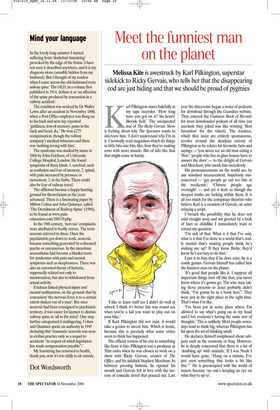Mind your language
In the lovely long summer I started suffering from ‘deckchair hamstring’ provoked by the edge of the frame. I have not seen it described anywhere, and it is my diagnosis alone (sensibly hidden from my husband). But I thought of my tendon when I came across the old-fashioned term railway spine. The OED, in a volume first published in 1914, defines it as ‘an affection of the spine produced by concussion in a railway accident’.
The condition was noticed by Dr Waller Lewis after an accident in November 1860, when a Post Office employee was flung on to his back and next day reported ‘giddiness, loss of memory, pains in the back and head, &c.’ He won £275 compensation, though the railway company’s medical witnesses said there was ‘nothing wrong with him’.
The syndrome was studied by name in 1866 by John Erichsen, of University College Hospital, London. He found symptoms of three kinds: 1. cerebral, such as confusion and loss of memory; 2. spinal, with pain increased by pressure or movement; 3. in the limbs. There could also be fear of railway travel.
The affliction became a happy hunting ground for theoreticians as the years advanced. There is a fascinating paper by Milton Cohen and John Quintner, called ‘The Derailment of Railway Spine’ (1996), to be found at www.paineducation.com/100139.php.
In the 19th century, ‘nervous’ complaints were attributed to bodily nerves. The term neurosis referred to these. Once the psychiatrists got down to work, neurosis became something generated by a diseased psyche or unconscious. In the meantime neurasthenia had become a blanket term for syndromes with pain and mental symptoms such as sleeplessness. There was also an unrooted theory of hysteria, supposedly related not only to menstruation, but also to withdrawal from sexual activity.
Erichsen linked physical injury and mental malfunction, on the grounds that by concussion ‘the nervous force is to a certain extent shaken out of a man’. But once neurosis had been reassigned to psychiatric territory, it was easier for laymen to dismiss railway spine as ‘all in the mind’. One step further categorised it malingering. Cohen and Quintner quote an authority in 1945 declaring that ‘traumatic neurosis was seen in civilian practice only as a sequel to accidents “in respect of which legislation has made compensation payable”.’ My hamstring has returned to health, thank you, now it’s too chilly to sit outside.
Dot Wordsworth


































































































 Previous page
Previous page